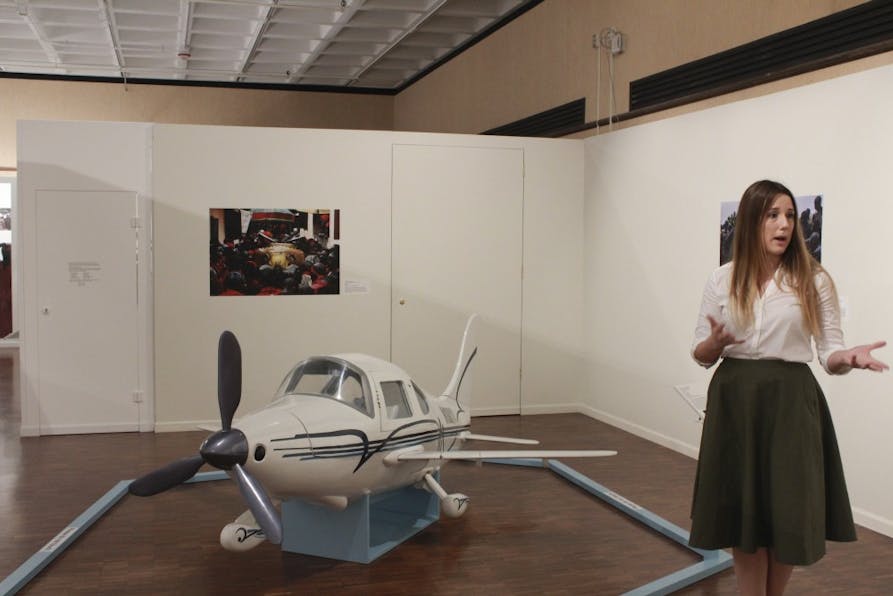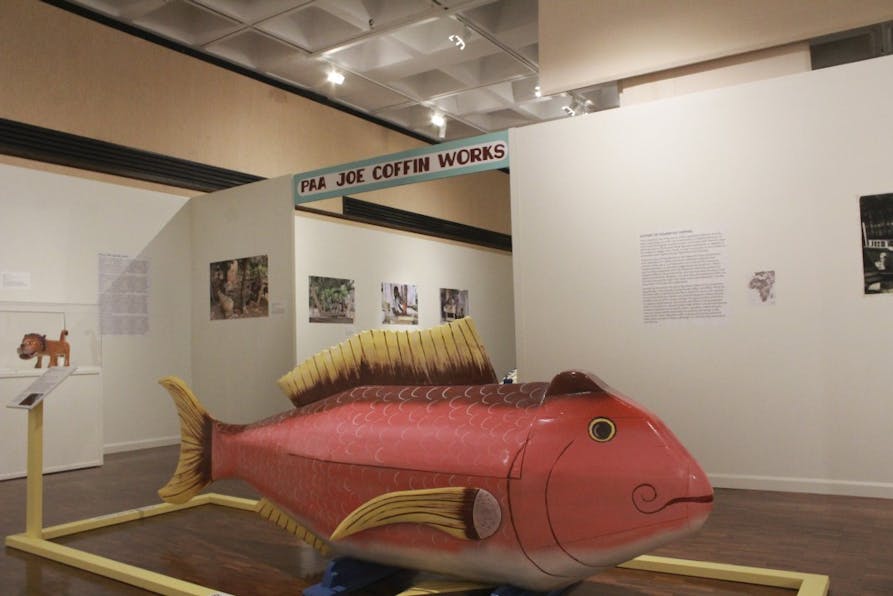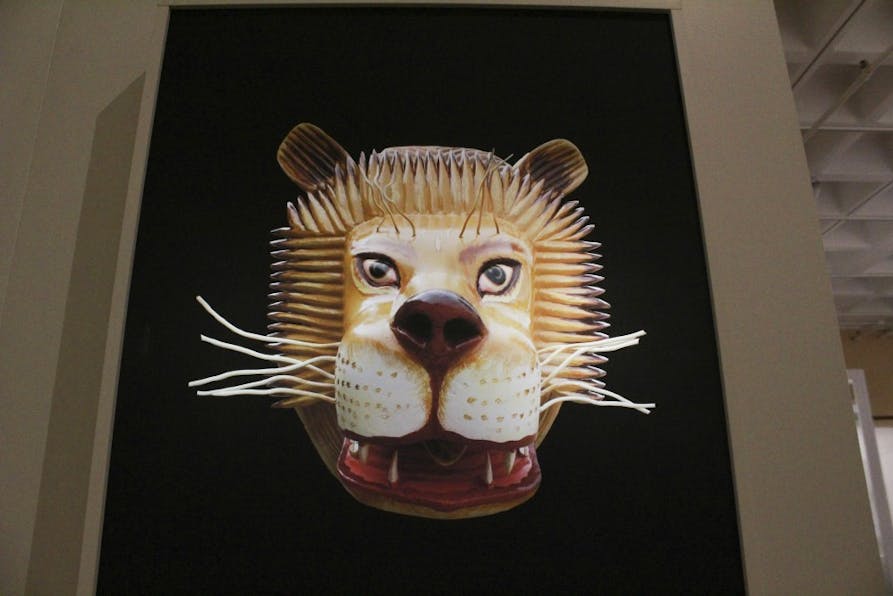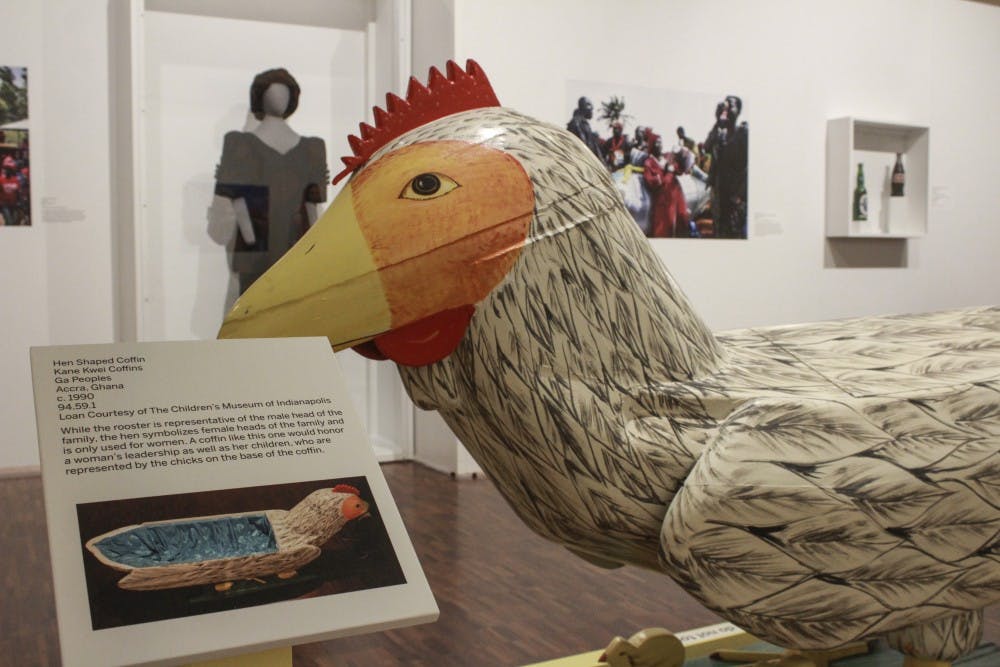Most airplanes fly. Some, like the airplane on display at the Mathers Museum of World Cultures, were built to be put in the ground.
As part of the Animal/Human Themester at IU, Kristin Otto, Ph.D. candidate in anthropology, presented “Shapes of the Ancestors: Bodies, Animals, Art, and the Ghanaian Fantasy Coffins,” on Thursday at the Mathers Museum. The fantasy coffin exhibit runs through Dec. 31.
Fantasy coffins first arose in Ghana when British colonizers outlawed the Ga people's traditional burial practices. They turned to these fantasy coffins as a way to retain connection to and help the dead pass on to the afterlife.
“They began building figurative coffins to make essential and very public connections between the dead and the living,” Otto said.
Since then, fantasy coffins have become as much for museums and collectors as they are for the Ga people. Coffins are generally made of woods such as cedar, mahogany and wawa.
Some of the fantasy coffins on display at the museum were animals. Others took the form of an airplane and a shoe.

Otto said people can also purchase miniature coffins shaped as Coke and beer bottles.
“Mostly, they’re a collectible form,” Otto said.
One colorful coffin on display was a hen with chicks surrounding it. In Ghanaian culture, the hen is symbolic of a mother’s status as a leader, and the chicks surrounding the bottom represent the children.
“They’re representative of individual identity and community identity,” Otto said.
Coffin designs depend on the dead person’s “okadi,” or family and clan symbol, which could range from eagles to lions or other animals. Profession or personal interests also determine coffin styles.
Not until the 1950s did fantasy coffins gain international popularity. Ghanaian coffin artist Kane Kwei first got into the fantasy coffin industry when he allegedly built a boat coffin for his dying uncle, a fisherman.
His nephew, Paa Joe, later broke off from Kwei's practice to create his own successful coffin company.
Despite the colorful, festive nature of fantasy coffins, Ga funerals are emotional experiences, Otto said. An overnight wake is kept by the family, then the deceased person is placed in the coffin and paraded around to his or her favorite places.
Oftentimes, fantasy coffins are broken as they are placed in the ground. Otto said this is done to discourage looters, but also to facilitate the deceased person’s ascendance into the afterlife.
“There are complex intersections between individual people and their families and the community surrounding them,” Otto said.
Though Paa Joe, Kane Kwei and other coffin builders create coffins for burial, much of their business comes from international sources.
Some fantasy coffins, including the shoe, airplane and hen at the Mathers Museum, have taken the form of an octopus, clam shell, basketball, chameleon and an ear of corn.

Sophomores Charlotte McBride attended as part of N110: Introduction to Studio Art for Nonmajors.
“I thought it’d be more about people and animal relations,” McBride said. “But it really took a cool twist.”
One coffin Otto presented was a pink uterus, made for a gynecologist — fallopian tubes and ovaries extended over the coffin.
“It’s kind of famous in fantasy coffin lore,” Otto said.
Fantasy coffins intended for burial can cost up to $7,000 and beyond. Ga funerals are funded by the family and its community, Otto said.
“The entire cost can cost up to two years wages for an average town person,” Otto said.

These fantasy coffins and funerals foster as much competition among families as they do community togetherness, Otto said. One family might spend a certain amount of money on a funeral, only for another family to spend even more at their funeral.
“These competitions for the most elaborate and successful funeral remind us the funerals are as much for the living as for the dead,” Otto said.
Sophomore Sarah Welsh also attended the lecture for Intro to Studio Art for Nonmajors.
“The uterus was cool,” Welsh said. “One-hundred percent.”
At 1:30 on Sept. 16, Paa Joe will be at the exhibit for questions, followed by a presentation of the documentary “Paa Joe and the Lion” at the IU Cinema.




